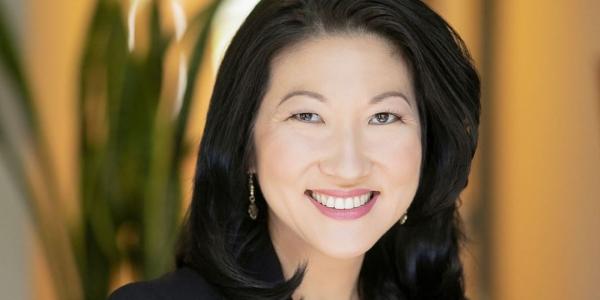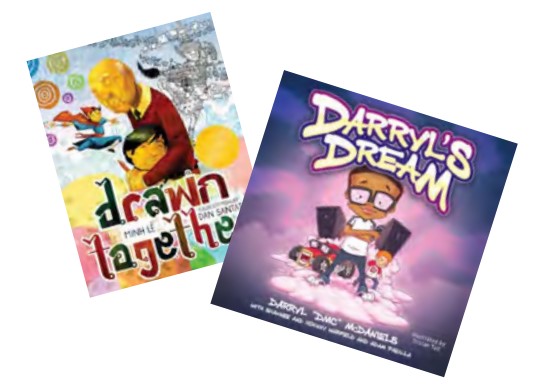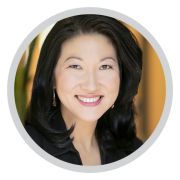Making Connections: “Who Looks Like Me?” Representation Matters to Our Children and Our Members

You are here
As I travel around the country, visiting programs and talking with educators and young children, I am struck by the wealth of individualized learning opportunities. As early childhood educators, you are creating classroom environments and learning experiences tailored to the rich diversity of the children in your care. You are creating caring, equitable communities of learners that seek to honor children’s strengths, identities, and contexts. You are dismantling biases and embracing the call to ensure that each and every child feels seen, welcomed, and has a sense of belonging.
This strikes me deeply. As a first-generation Korean American, I rarely saw my culture reflected in the books and materials of my early classrooms, even though I was enrolled in an English as a Second Language (ESL) program in my early years. Despite my affinity for books and the worlds I discovered through them, I rarely saw characters who looked like me. Indeed, it was many years before I saw an Asian girl in a storybook. While I was fortunate to have educators and parents who encouraged me to lean into my talents and to be authentically myself, this lack of representation was disheartening.
Even with my own children when they were young, I had to work to find books that depict multiracial families and books depicting Korean families that were written in English. These titles exist (The Have a Good Day Café, by Frances Park and Ginger Park; Peach Heaven, by Yangsook Choi), and the landscape of diverse books is growing. However, it still takes thoughtfulness and intentionality to find them.
We know that representation matters. It matters to adults, and it matters to children. It is crucially important for children to see themselves and their families, languages, and cultures reflected in early childhood settings in a meaningful way. This pertains to classroom environments and materials as well as to educators’ teaching practices. Program policies, curricula, and assessments—the focus of this issue’s cluster—must be culturally responsive, with teachers providing opportunities for all of their children to learn and grow. This is done by viewing each child’s culture and language as unique assets and by building on the funds of knowledge that children and their families bring to the school community.
Happily, I see examples of this asset-based mindset every day:
- I had the privilege of visiting Sandy Lane Nursery School in Belleville, New Jersey, in October. This NAEYC-accredited program serves a deep breadth of families, purposely integrating their cultures and lived experiences into their curriculum, classroom settings, and family engagement activities.
-
At the NAEYC Annual Conference in November, members had a chance to connect with two book authors who celebrate diverse characters, ensuring that children have a mirror to reflect who they are and a window through which to see others. Minh Lê, our keynote speaker, showcases Vietnamese characters in his award-winning book Drawn Together, in which an immigrant grandfather and his American-born grandson explore the ways art transcends language and cultural barriers.
 Minh talked about the power of books and the importance of equity in literature. I also had the chance to interview Darryl “DMC” McDaniels during our opening session. His picture book, Darryl’s Dream, celebrates diversity and finding your own voice. He shared how, as a young child, he felt like an outsider. It was only in comic books that he saw “smart, geeky, awkward, clumsy people like me.” He adds that “the early years are critical to giving children the tools to navigate all the things we will go on to experience in adult life.”
Minh talked about the power of books and the importance of equity in literature. I also had the chance to interview Darryl “DMC” McDaniels during our opening session. His picture book, Darryl’s Dream, celebrates diversity and finding your own voice. He shared how, as a young child, he felt like an outsider. It was only in comic books that he saw “smart, geeky, awkward, clumsy people like me.” He adds that “the early years are critical to giving children the tools to navigate all the things we will go on to experience in adult life.”
- Natalie Williams, who is highlighted in this issue’s Member Spotlight, fiercely advocates for diversity and equity in her work at the Miami Children’s Museum Preschool. In her NAEYC-accredited program, the unique strengths of all children are represented and celebrated. “Diversity, equity, and inclusion are shown through practices, policies, and approaches to learning,” she says. “When we’re treated as equal contributors, that’s when we’re heading in the right direction to an equitable tomorrow.”
NAEYC is committed to advocating for and supporting you as you continue to individualize your practice to meet children where they are. The tapestry of our 60,000-plus members is rich and diverse, as are the children and families we serve. We are committed to ensuring that all of us—and our individual contexts—are celebrated, supported, and appreciated. Through our “Advancing Equity” and “Developmentally Appropriate Practice” position statements, our advocacy efforts, and our commitment to centering your stories, we will continue to create learning environments where children can thrive.
Just as representation matters, so do your stories. This year, I will continue traveling around the country, centering your stories as you do the vital, transformational work of early childhood education. Your experiences drive our priorities as we work to ensure that each and every teacher—as well as each and every child—is seen and valued for who they are.
Copyright © 2023 by the National Association for the Education of Young Children. See Permissions and Reprints online at NAEYC.org/resources/permissions.
Michelle Kang serves as NAEYC’s Chief Executive Officer.
